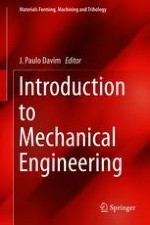2018 | OriginalPaper | Buchkapitel
9. Advanced Machining Processes
verfasst von : Manas Das, Uday S. Dixit
Erschienen in: Introduction to Mechanical Engineering
Aktivieren Sie unsere intelligente Suche, um passende Fachinhalte oder Patente zu finden.
Wählen Sie Textabschnitte aus um mit Künstlicher Intelligenz passenden Patente zu finden. powered by
Markieren Sie Textabschnitte, um KI-gestützt weitere passende Inhalte zu finden. powered by
